Transition of value
Walter Benjamin’s (1892-1940) The Work of Art in the Age of Mechanical Reproduction, originally
published in 1935, contemplates and predicts how the mechanical reproduction of art and photography
would transform our understanding of art. What was lacking in Benjamin's view, through the use of
mechanical reproduction, was the aura of the work. The aura being the unique “presence in time and
space and its originality”.[1] He argues that a mechanical reproduction can be identical to its
original, but will always lack the aura which cannot be replicated. Without the original presence in
time and space, the work loses the value that viewers feel when viewing the artwork.[2] Benjamin
claims that this shift has created two different values, the cult value and its exhibition value.
Cult value requires for a work of art to be exclusive and hidden from the public eye, such as many
important statues which are only on display in sacred temples. This idea led to the notion that art
cannot be reproduced as it would lose its sense of aura if it were to be produced.[3]
Exhibition value enables a fundamental change in how art functioned, especially because of the use
of photography and film. The value does not come anymore from its rituals and traditions. A work
travels to meet the beholder or listener in his own particular situation; from its one-time and
place appearance, to a mass appearance.[4] This means it loses its presence in time and space, its
unique existence at the place where it happens to be; in other words it loses its aura.
Dutch philosopher Jos de Mul (1956-) elaborates on Benjamin’s theory, by saying that because of the
use of computers and the internet, a new value appeared: the manipulation value.[5] We have the
possibility to take an existing element and add a digital one to it. This transformation through the
use of certain software (e.g. Adobe Photoshop or in the context of this project Processing) allows
us (the user) to digitally recombine. Everybody with a computer can become a ‘recombinator’, as De
Mul describes it. Adding to this, De Mul writes that these recombinations create a return of the
aura. But it is a return with a twist. The aura is not no longer in the history of the work, but in
the virtual possibilities in the future. What we experience are so called "original auratic copies”,
because the transcendental is no longer in the history of the work, but in its virtual
possibilities.[*]
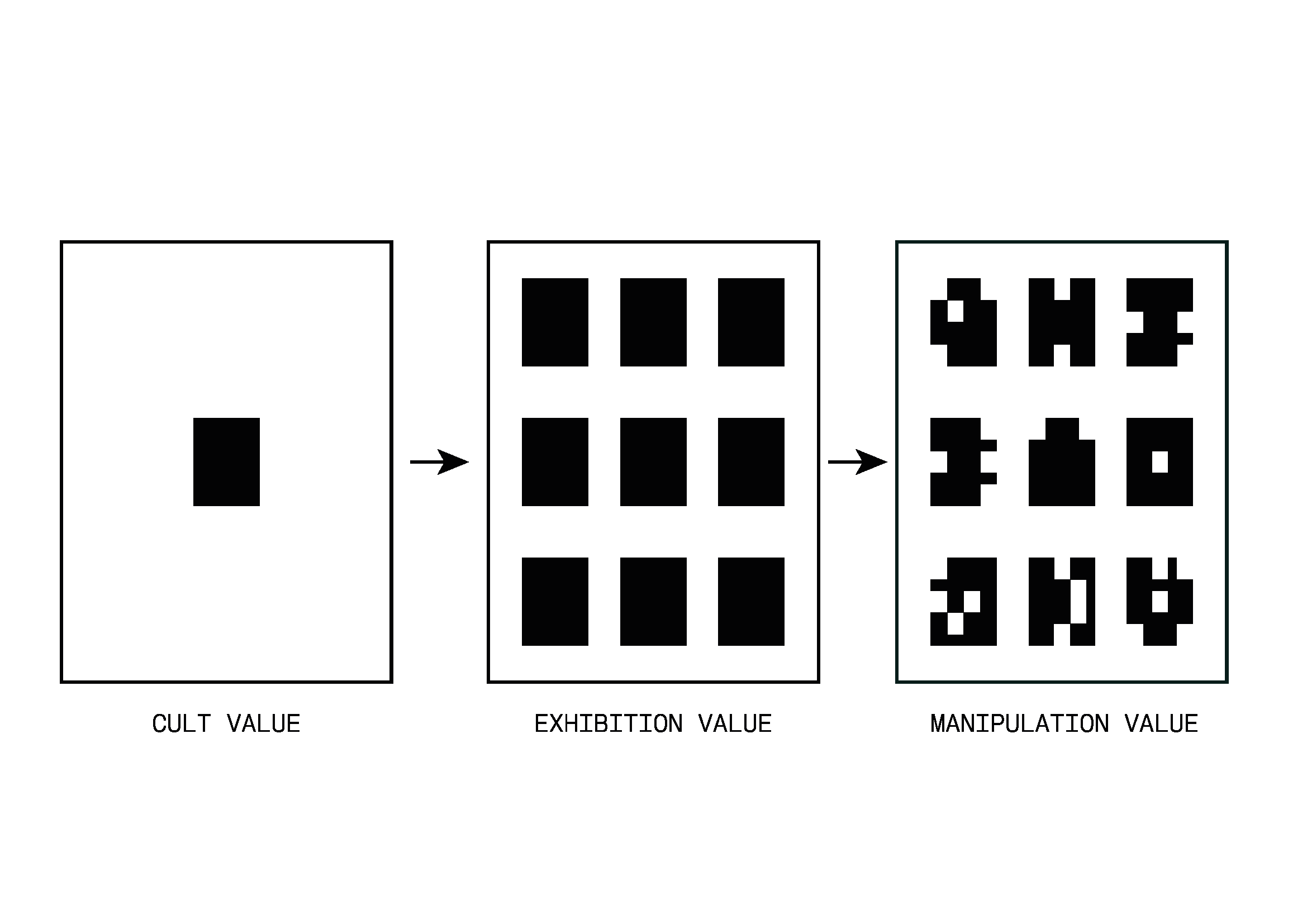
Transition of values
Conclusion/reflection
Walter Benjamin’s essay The Work of Art in the Age of Mechanical Reproduction, is in my opinion a
important work to read and study. Because these shifts from different values, have not only changed the
way we view art, but also the way we define art. It developed an entire transformation in
the nature of art and its purpose and function in society, as Benjamin describes it.
As I previously said, the aura is not no longer in the history of the work, but in the virtual
possibilities in the future. This creates a new digital playground, with still endless possibilities,
where everybody with access to a computer and the internet is able to create his own reality.
In my opinion, this new playground is both interesting, but is also important to question. The
interesting part is that we can develop a new genre of art which can be share easily with a broad
audience. Art will become more public, even more than it already was. Tools like Processing are
open-source, which means it can be used at no cost. I believe that this mindset of a more
open-sourced society can contribute to a broader dynamic between us human, and how we interpreted
the world around us.
The importance however this changes bring us is: what is reality, when almost everybody can contribute
his own perspective? This new genre will play an important role in how we undergo the world around
us. Benjamin argues that the mass media have changed society to such an extent that the everyday
perception of reality is no longer authentic. In fact, according to Benjamin, we no longer perceive at
all. We undergo. But what do we undergo? And how do we undergo it? By continuously asking
ourselves certain questions, we will be able to not only understand the medium we use, but also how we
can use it in a more critical way.
sketch Dummy
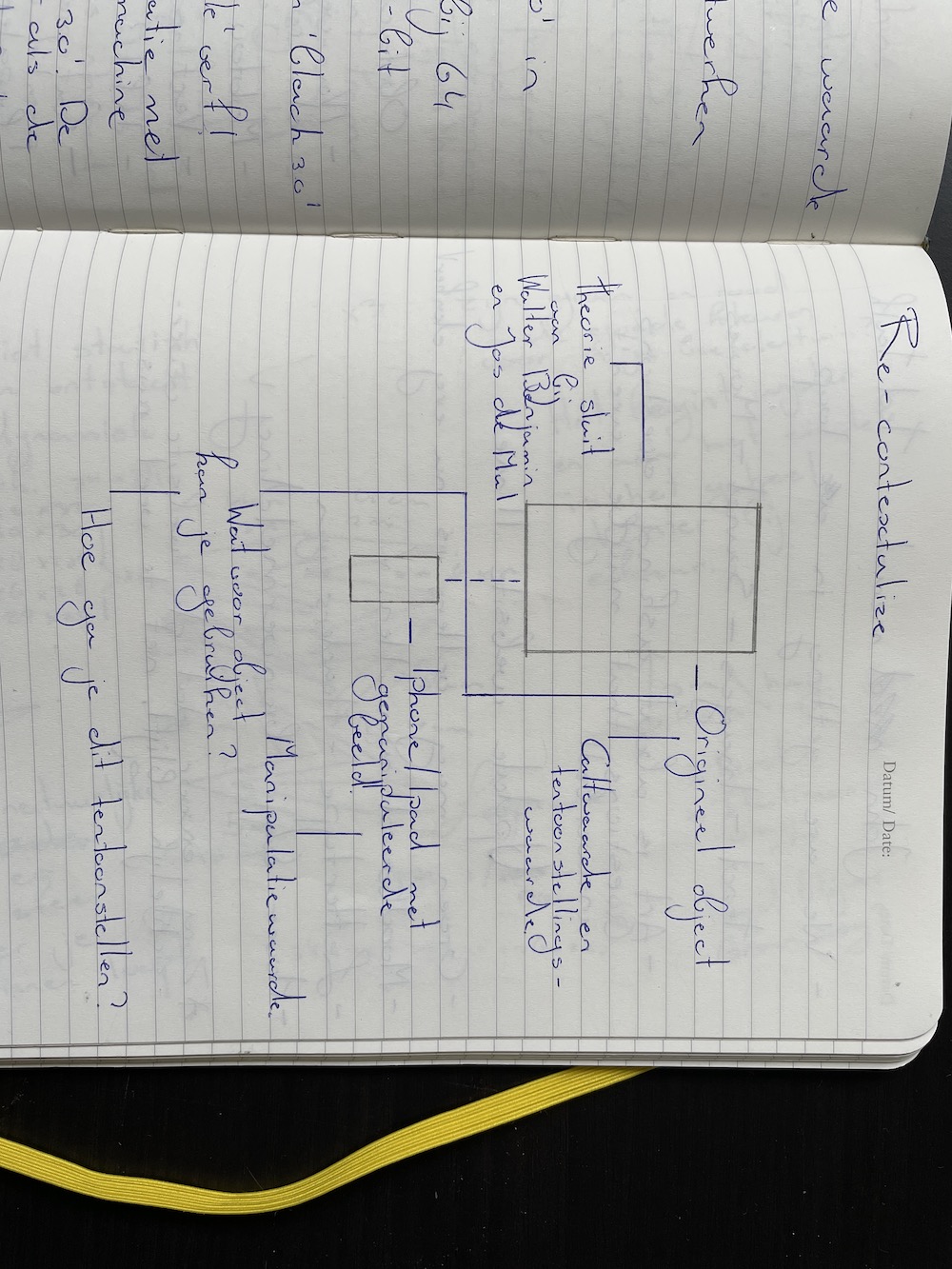
Sketch 1
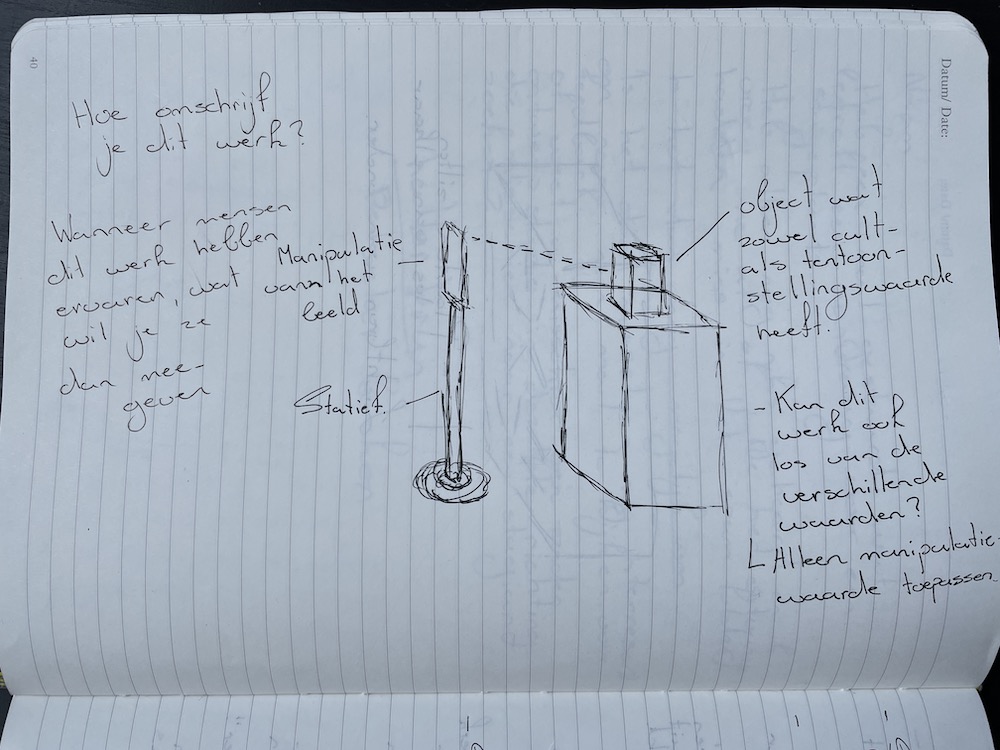
Sketch 2
sketch Cinema 3D
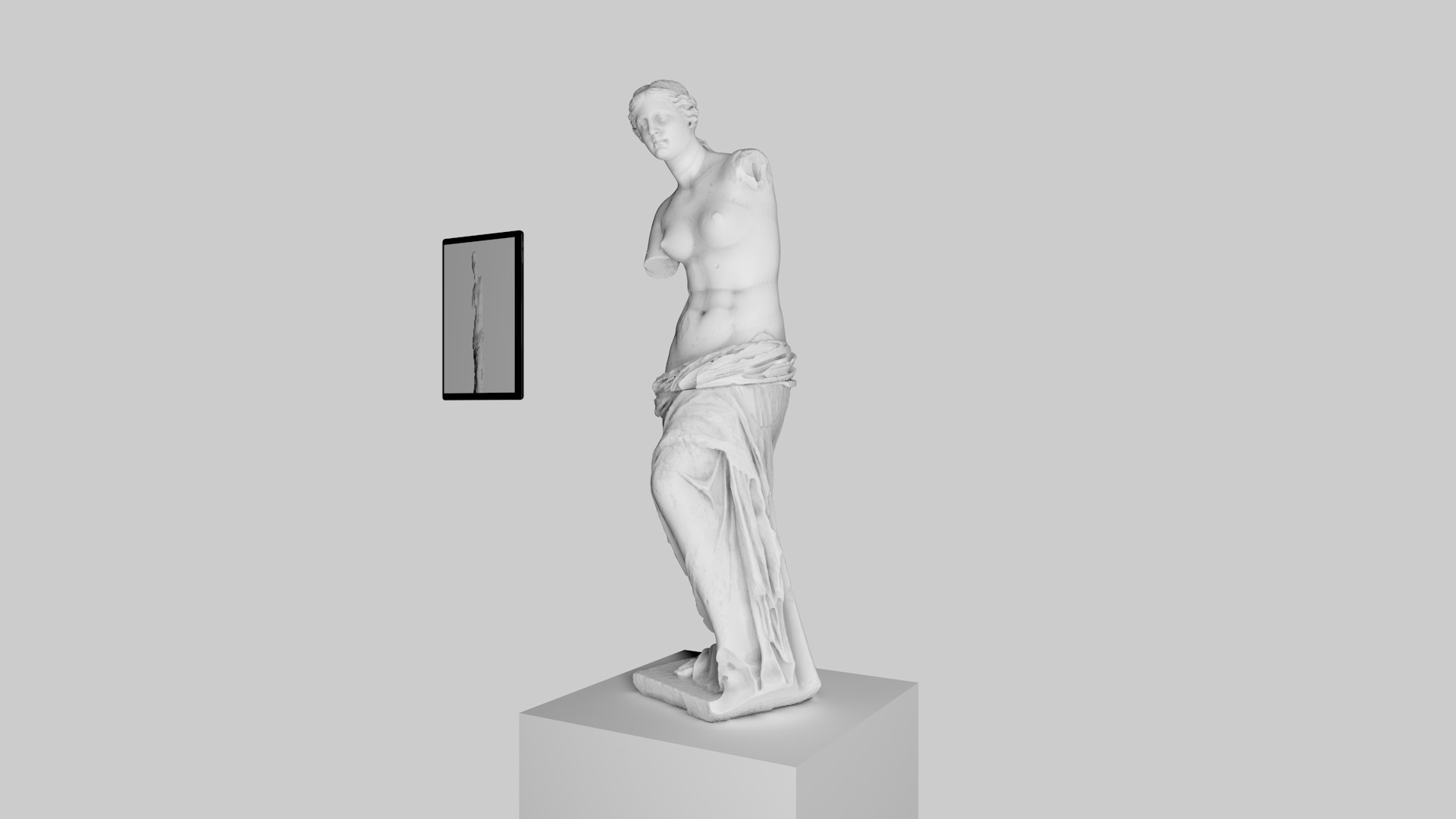
Test 1.0
Activate the rear camera of your phone, by using the capture = createCapture(VIDEO); function. Then
loading all the pixels from the camera, a black square is drawn and the size of it depends on the
brightness of the pixel. During this experiment I used a Venus statue, mainly because I already had this
one. But for the experiments that will follow, I want to use something that is better linked with the
different values.
TRY TEST 1.0 (ONLY ON MOBILE PHONES)
Test 1.0 live-video
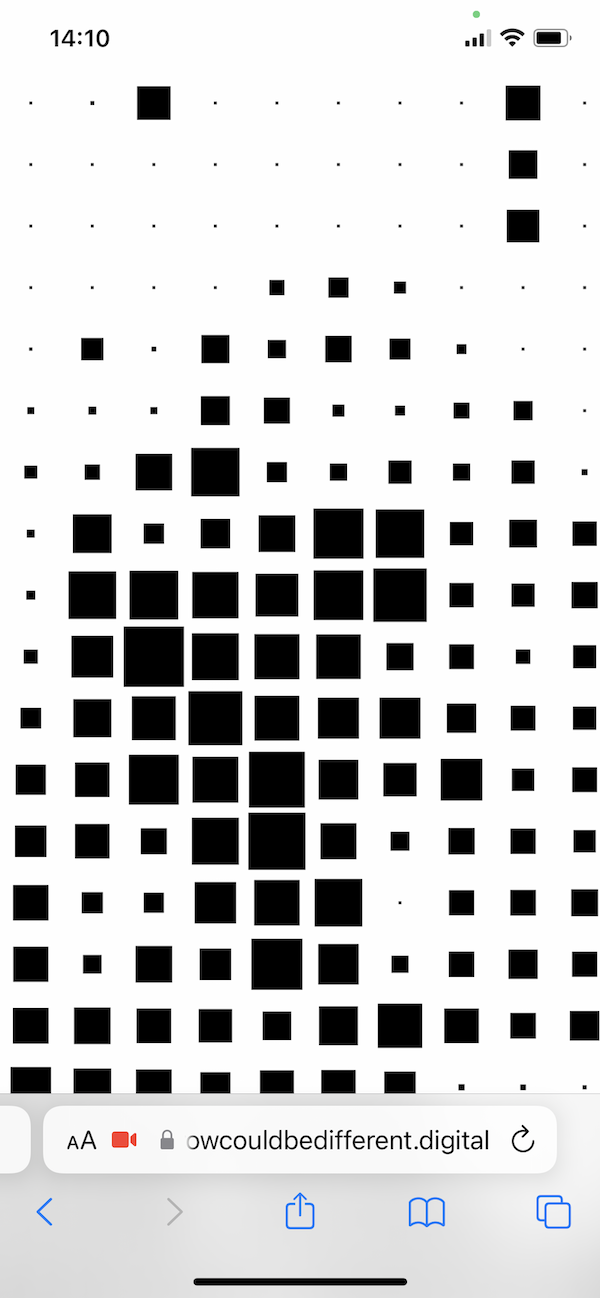
Test 1.0 still
Code Test 1.0
var capture
function setup() {
createCanvas(displayWidth, displayHeight);
var constraints = {
audio: false,
video: {
facingMode: {
exact: "environment"
}
}
};
capture = createCapture(constraints);
capture.size(width, height);
capture.hide();
}
function draw() {
background(255);
let gridSize = 70;
capture.loadPixels();
for (let y = 0; y < capture.height; y += gridSize) {
for (let x = 0; x < capture.width; x += gridSize) {
let index = (y * capture.width + x) * 4;
let r = capture.pixels[index];
let dia = map(r, 0, 255, gridSize, 2);
fill(0);
noStroke();
rectMode(CENTER);
// circle(x + gridSize / 2, y + gridSize / 2, dia);
rect(x + gridSize / 2, y + gridSize / 2, dia);
}
}
}
David Sculpture
I found this David statue on Amazon and it connects better with the concept of this experiment. David is
a masterpiece created by the Italian artist Michelangelo. It is made from marble between 1501 and 1504.
It was commissioned as one of a series of statues to be positioned along the roofline of the east end of
the Florence Cathedral. But it was instead placed in a public square, outside the Palazzo Vecchio, the
seat of civic government in Florence, in the Piazza della Signoria. The statue was moved to the Galleria
dell'Accademia, Florence, in 1873, and later replaced at the original location by a replica.
Replicas of Michelangelo's David have been made numerous times, in plaster, imitation marble,
fibreglass, snow, and other materials. There are many full-sized replicas of the statue around the
world. Some were made for study at art academies in the late nineteenth century and later. The statue
has also been replicated for various commercial reasons or as artistic statements.
See this
list for more information on where there are replicas of this statue.
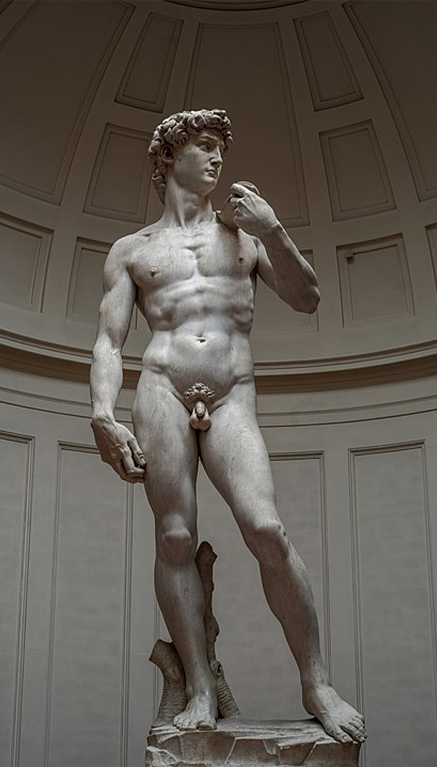
Original David at the Galleria dell'Accademia, Florence
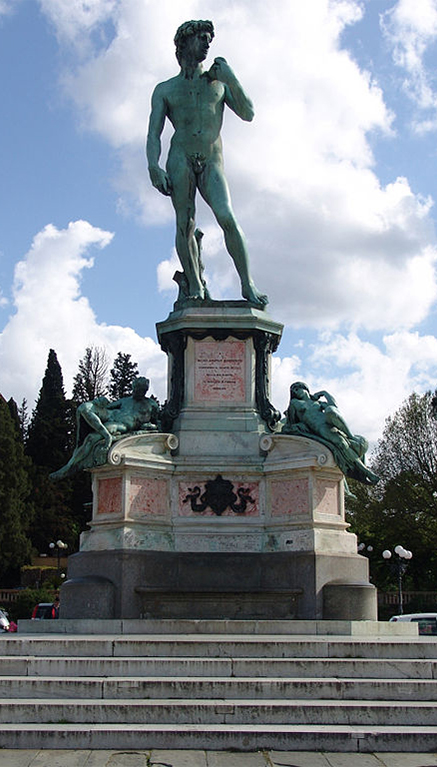
Piazzale Michelangelo, Florence
.jpg)
Victoria and Albert Museum, London
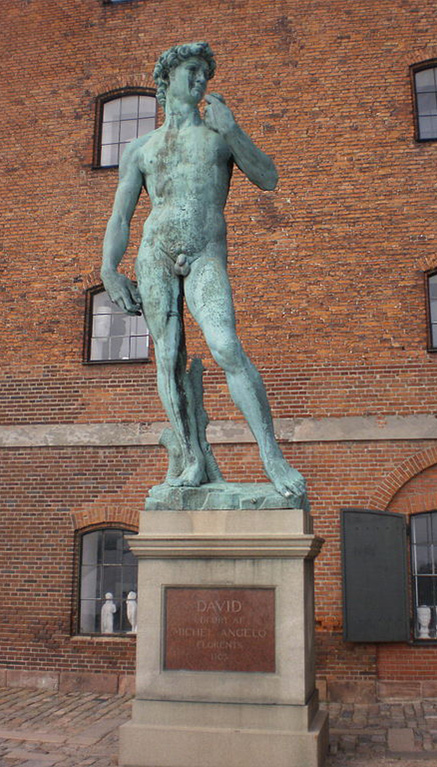
Langelinie Promenade, Copenhagen

Avenue du Prado, Marseille
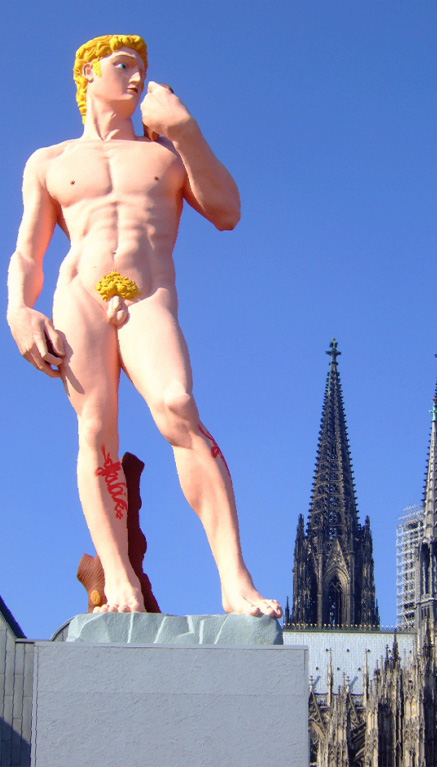
Hans-Peter Feldmann, David (2006) in Cologne - since 2010 in Duisburg
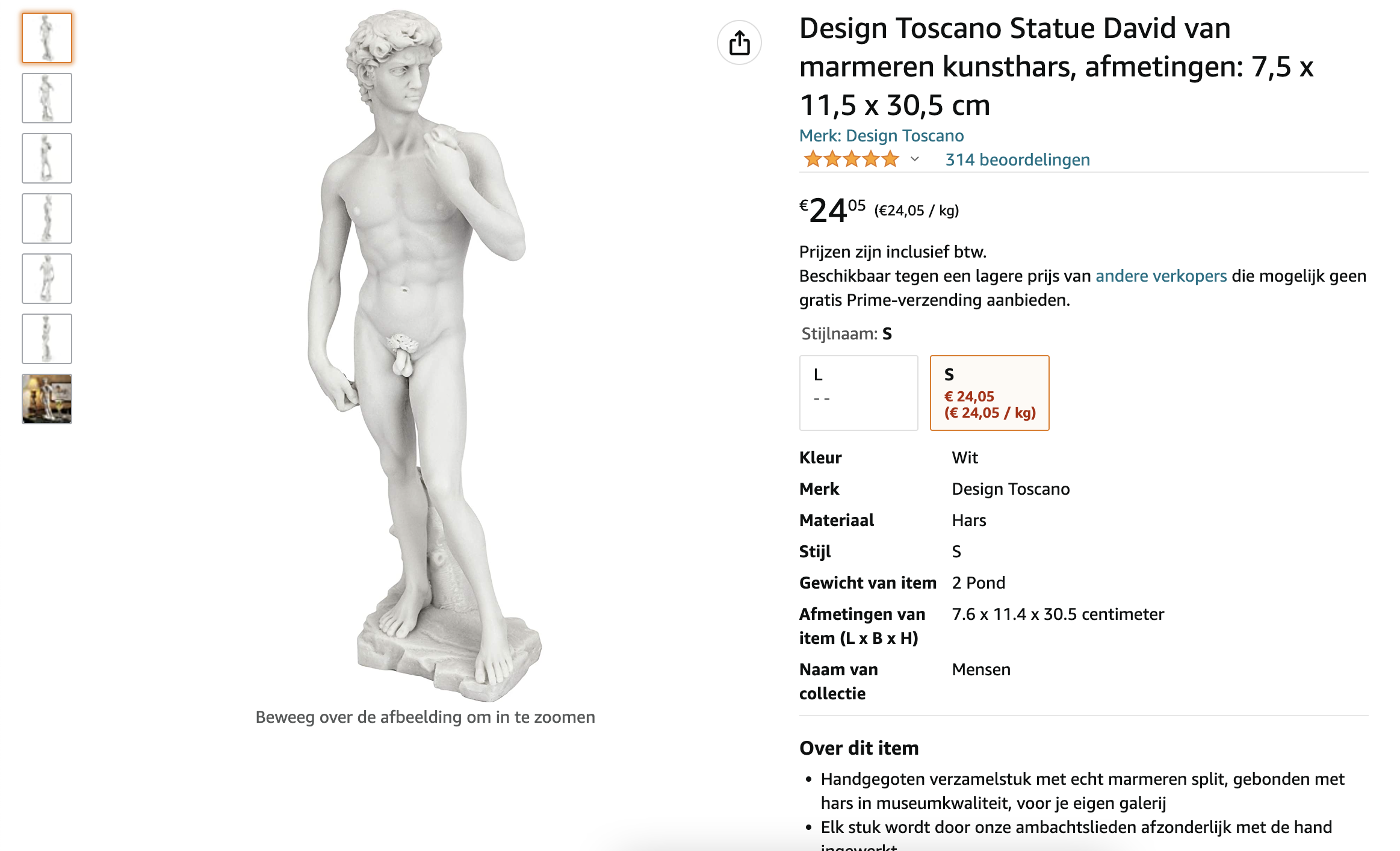
David by Michelangelo on Amazon
Test 2.0
I used the same code from the first test, but this time the size of the squares can be changed by the
movement of your finger.
TRY TEST 2.0 (ONLY ON MOBILE PHONES)
Test 2.0 live-video
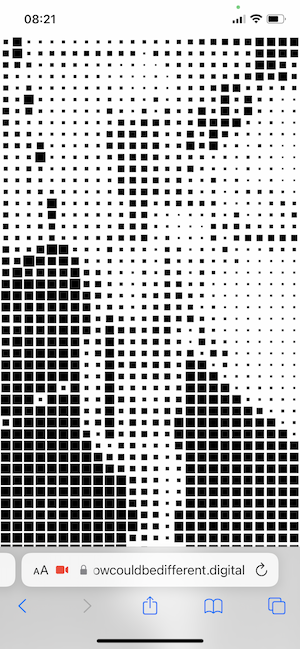
Test 2.0 still
Code Test 2.0
var capture
function setup() {
createCanvas(displayWidth, displayHeight);
var constraints = {
audio: false,
video: {
facingMode: {
exact: "environment"
}
}
};
capture = createCapture(constraints);
capture.size(width, height);
capture.hide();
}
function draw() {
background(255);
let gridSize = int(map(mouseX, 0, width, 15, 50));
capture.loadPixels();
for (let y = 0; y < capture.height; y += gridSize) {
for (let x = 0; x < capture.width; x += gridSize) {
let index = (y * capture.width + x) * 4;
let r = capture.pixels[index];
let dia = map(r, 0, 255, gridSize, 2);
fill(0);
noStroke();
rectMode(CENTER);
// circle(x + gridSize / 2, y + gridSize / 2, dia);
rect(x + gridSize / 2, y + gridSize / 2, dia);
}
}
}
Test 3.0
A digital slit-scan effect. The slit-scan photography technique is a photographic and cinematographic
process where a moveable slide, into which a slit has been cut, is inserted between the camera and the
subject to be photographed. Its principle is based upon the camera’s relative movement in relation to a
light source, combined with a long exposure time.
TRY TEST 3.0 (ONLY ON MOBILE PHONES)
Test 3.0 live-video
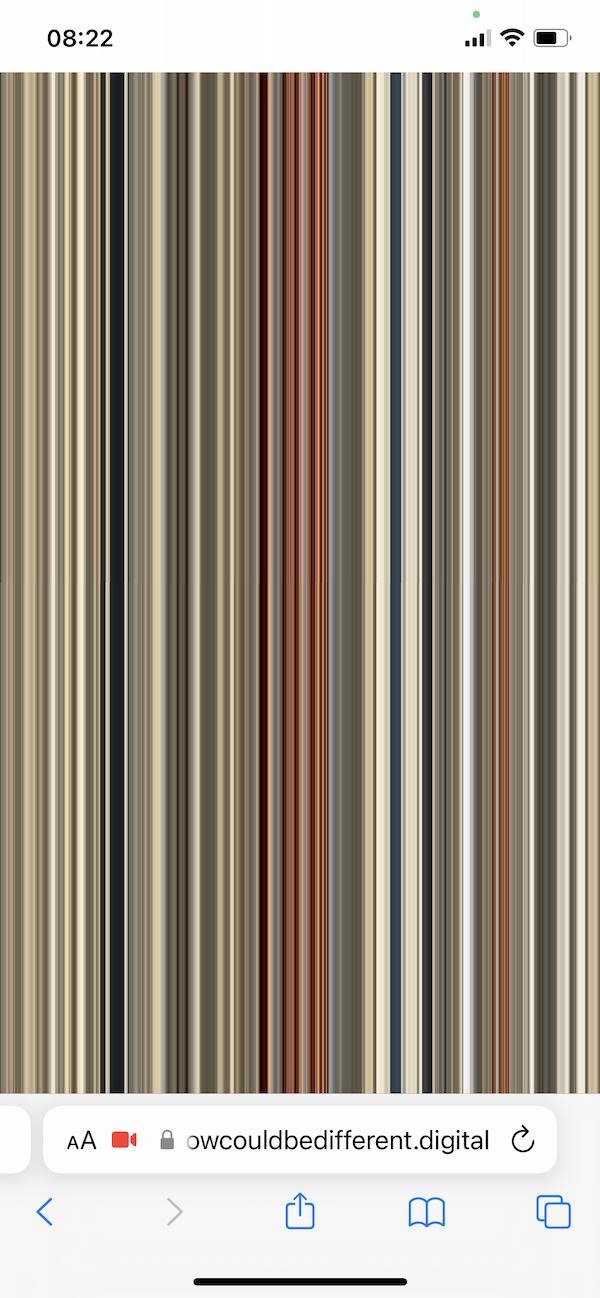
Test 3.0 still
Code Test 3.0
var img;
var x = -50;
var y = 0;
function setup() {
c = createCanvas(windowWidth, windowHeight);
background(0);
img = createCapture({ audio: false, video: { facingMode: { exact: "environment" } }});
img.size(windowHeight, windowWidth);
img.hide();
}
function draw() {
img.loadPixels();
var line = img.get(img.width / 2, 0, 1, img.height);
pixel0 = img.get(img.width / 2, img.height / 2);
pixel1 = img.get(img.width / 2, img.height / 2);
pixel2 = img.get(img.width / 2, img.height - img.height / 2);
translate(x, 0);
noStroke();
fill(pixel0);
rect(x, 0, x, height / 2);
fill(pixel1);
rect(x, height / 2, x, height / 2);
fill(pixel2);
rect(x, height / 2, x, height - height / 2);
if (x < windowWidth)
x += 0.2;
else {
x = 0;
}
}